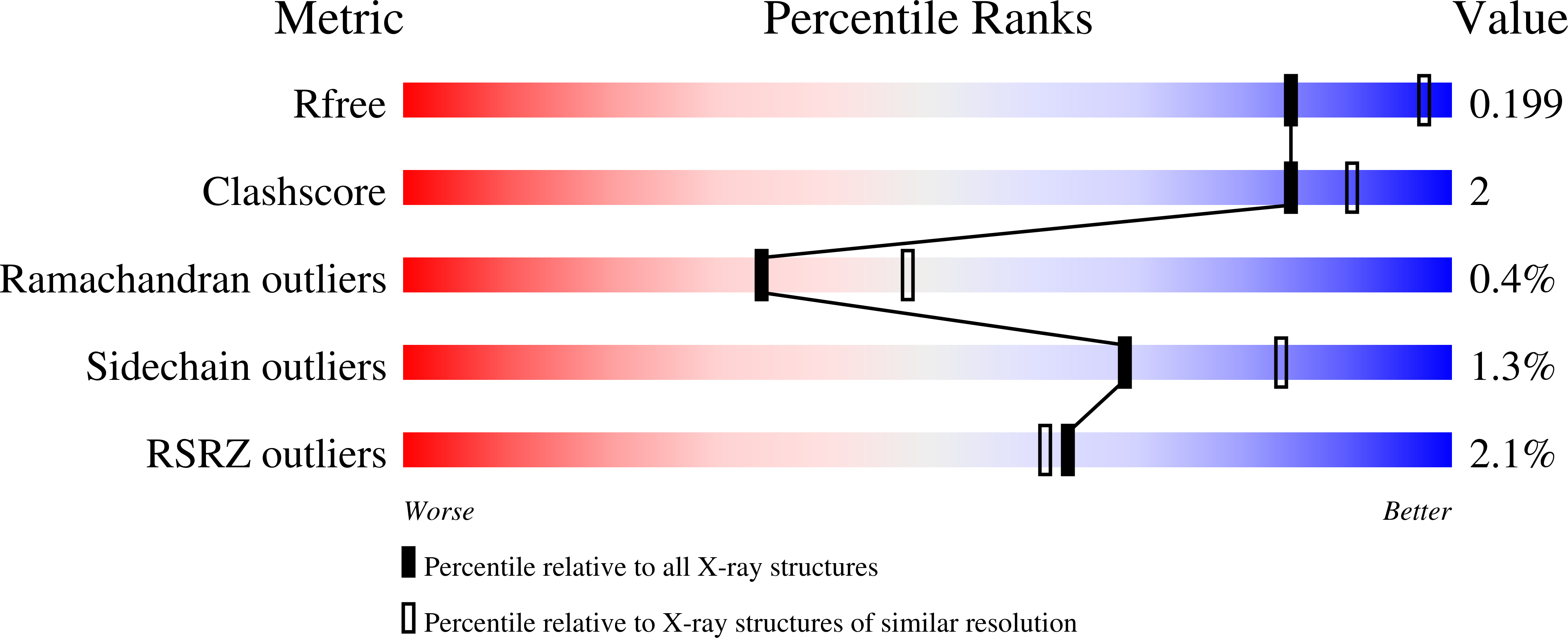A Single Mutation Traps a Half-Sites Reactive Enzyme in Midstream, Explaining Asymmetry in Hydride Transfer.
Finer-Moore, J.S., Lee, T.T., Stroud, R.M.(2018) Biochemistry 57: 2786-2795
- PubMed: 29717875
- DOI: https://doi.org/10.1021/acs.biochem.8b00176
- Primary Citation of Related Structures:
6CDZ - PubMed Abstract:
In Escherichia coli thymidylate synthase (EcTS), rate-determining hydride transfer from the cofactor 5,10-methylene-5,6,7,8-tetrahydrofolate to the intermediate 5-methylene-2'-deoxyuridine 5'-monophosphate occurs by hydrogen tunneling, requiring precise alignment of reactants and a closed binding cavity, sealed by the C-terminal carboxyl group. Mutations that destabilize the closed conformation of the binding cavity allow small molecules such as β-mercaptoethanol (β-ME) to enter the active site and compete with hydride for addition to the 5-methylene group of the intermediate. The C-terminal deletion mutant of EcTS produced the β-ME adduct in proportions that varied dramatically with cofactor concentration, from 50% at low cofactor concentrations to 0% at saturating cofactor conditions, suggesting communication between active sites. We report the 2.4 Å X-ray structure of the C-terminal deletion mutant of E. coli TS in complex with a substrate and a cofactor analogue, CB3717. The structure is asymmetric, with reactants aligned in a manner consistent with hydride transfer in only one active site. In the second site, CB3717 has shifted to a site where the normal cofactor would be unlikely to form 5-methylene-2'-deoxyuridine 5'-monophosphate, consistent with no formation of the β-ME adduct. The structure shows how the binding of the cofactor at one site triggers hydride transfer and borrows needed stabilization from substrate binding at the second site. It indicates pathways through the dimer interface that contribute to allostery relevant to half-sites reactivity.
Organizational Affiliation:
Department of Biochemistry and Biophysics , University of California , San Francisco , California 94143-2240 , United States.


















